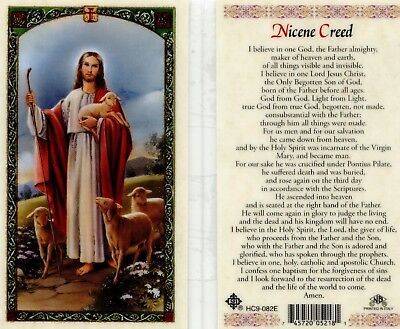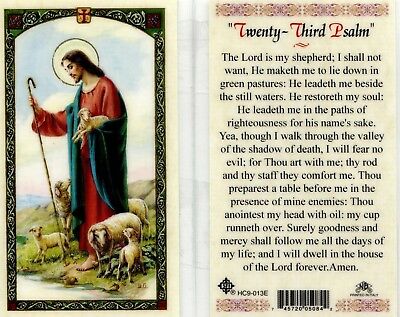-40%
Holy Card of Saint Joseph of Cupertino Plus a Large 1 3/4" Miraculous Medal
$ 3.14
- Description
- Size Guide
Description
Large Laminated Holy Card (6" X 4") of Saint Joseph of Cupertino Plus a Large 1 3/4" Silver Oxidized Miraculous Medal. Condition is New. Shipped with USPS First Class Package.Plus you will get a brand new, large and beautifully detailed Miraculous Medal that is 1 3/4". This large version of one of the most popular medals is even more stunning than the others. The large size of this piece brings out every detail of its beautiful design. Two sided silver oxidized, and made in Italy. Measures 1 3/4" tall by 1" wide. Die-cast in Italy for exceptional detail, you will enjoy the beauty of Our Lady's medal made by the finest craftsmen in the world. Attached jump ring is included, and it is silver oxidized - that wonderful finish that only the Italians have perfected. This medal is also known as the Medal of the Immaculate Conception, created by St. Catherine Laboure following a vision of the Blessed Virgin Mary. This medal is believed to bring special intercessions on behalf of the Blessed Virgin Mary if worn with faith and devotion at the hour of death.
Saint Joseph of Cupertino, O.F.M. Conv. was an Italian Conventual Franciscan friar who is honored as a Christian mystic and saint. He Was said to have been remarkably unclever, but prone to miraculous levitation and intense ecstatic visions that left him gaping.
He was born Giuseppe Maria Desa, the son of Felice Desa and Francesca Panara in the village of Cupertino, then in the Province of Apulia,in the Kingdom of Naples, now in the Italian Province of Lecce. His father having died before his birth, however, the family home was seized to settle the large debts he had left, and his mother was forced to give birth to him in astable.
Joseph began to experience ecstatic visions as a child,which were to continue throughout his life, and made him the object of scorn.His life was not helped by his frequent outbursts of anger. He was soon apprenticed by his uncle to a shoemaker. Feeling drawn to religious life, in 1620 he applied to the Conventual Franciscan friars, but was rejected due to his lack of education. He then applied to the Capuchin friars in Martino, nearTaranto, by whom he was accepted in 1620 as a lay brother, but he was dismissed as his continued ecstasies made him unfit for the duties required of him.
After Joseph returned to the scorn of his family, he pleaded with the Conventual friars near Cupertino to be allowed to serve in their stables. After several years of working there, he had so impressed the friar's with the devotion and simplicity of his life that he was admitted to their Order, destined to become a Catholic priest, in 1625. He was ordained a priest on March 28, 1628. He was then sent to the Madonna delle Grazie, Gravina in Puglia, where he spent the next 15 years.
After this point, the occasions of ecstasy in Joseph's life began to multiply. It was claimed that he began to levitate while participating at the Mass or joining the community for the Divine Office, thereby gaining widespread reputation of holiness among the people of the region and beyond. He Was deemed disruptive by his religious superiors and Church authorities,however, and eventually was confined to a small cell, forbidden from joining in any public gathering of the community.
As the phenomenon of flying or levitation was widely believed to be connected with witchcraft, Joseph was denounced to the Inquisition. At their command, he was transferred from one Franciscan friary in the region to another for observation, first to Assisi, then briefly to Pietrarubbia and finally Fossombrone, where he lived with and under the supervision of the Capuchin friars. He practiced a severe asceticism throughout his life, usually eating solid food only twice a week, and adding bitterpowders to his meals. He passed 35 years of his life following this r
















